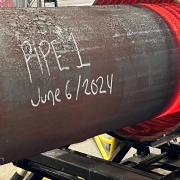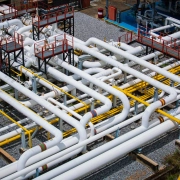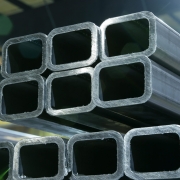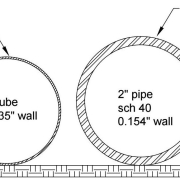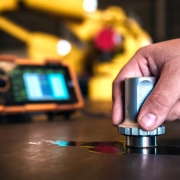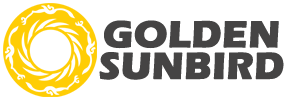Heat Treatments for Steel Pipes: A Comprehensive Industry Knowledge
Introduction
Heat Treatments for Steel Pipes are a critical process in steel pipe manufacturing, influencing the mechanical properties, performance, and application suitability of the material. Whether improving strength, toughness, or ductility, heat treatment methods such as normalizing, annealing, tempering, and quenching ensure steel pipes can meet the demanding requirements of various industries, including oil and gas, construction, and chemical processing.
In this comprehensive blog, we will cover the most common heat treatment methods used for steel pipes. This guide will help you understand each process, its purpose, and its application, offering valuable solutions to challenges users might face in selecting the right steel pipes for their specific needs.
Key Heat Treatments for Steel Pipes
1. +N (Normalizing)
Normalizing involves heating steel to a temperature above its critical point and then allowing it to cool in air. This heat treatment refines the grain structure, enhancing the pipe’s mechanical properties, making it more uniform, and increasing strength and toughness.
- Purpose: Improves ductility, toughness, and grain refinement.
- Applications: Ideal for structural components subjected to impact, such as crane booms and bridges.
- Example of Steel Grades: ASTM A106 Gr. B/C, API 5L Gr. X42–X70.
2. +T (Tempering)
Tempering is performed after quenching to reduce brittleness while maintaining hardness and strength. The process involves reheating the steel to a lower temperature, usually below its critical temperature, and then cooling it in the air.
- Purpose: Balances hardness with increased ductility and toughness.
- Applications: Commonly used in high-stress applications, such as shafts, gears, and heavy machinery components.
- Examples of Steel Grades: ASTM A333, ASTM A335 (for alloy steels).
3. +QT (Quenching and Tempering)
Quenching and Tempering (QT) involves heating the steel pipe to an elevated temperature, followed by rapid cooling in water or oil (quenching) and then reheating at a lower temperature (tempering). This treatment produces pipes with excellent strength and toughness.
- Purpose: Maximizes hardness and strength while improving toughness.
- Applications: Ideal for high-pressure pipelines, structural applications, and oilfield components.
- Example of Steel Grades: API 5L Gr. X65, ASTM A517.
4. +AT (Solution Annealing)
Solution Annealing involves heating stainless steel pipes to a temperature where carbides dissolve in the austenite phase and then rapidly cooling to prevent the formation of chromium carbides. This heat treatment enhances corrosion resistance.
- Purpose: Maximizes corrosion resistance, particularly in stainless steel pipes.
- Applications: Used for piping in the chemical, food, and pharmaceutical industries, where corrosion resistance is critical.
- Example of Steel Grades: ASTM A312 (stainless steel).
5. +A (Annealing)
Annealing is a process that involves heating the steel to a specific temperature and then cooling it slowly in a furnace. This softens the steel, reduces hardness, and improves ductility and workability.
- Purpose: Softens the steel for enhanced machinability and improved formability.
- Applications: Suitable for steel pipes used in environments where forming, cutting, and machining are required.
- Examples of Steel Grades: ASTM A179, ASTM A213 (for heat exchangers).
6. +NT (Normalizing and Tempering)
Normalizing and Tempering (NT) combines the processes of normalizing and tempering to refine the grain structure and improve the toughness of the steel pipe while enhancing its overall mechanical properties.
- Purpose: Refines the grain structure, providing a balance between strength, toughness, and ductility.
- Applications: Common in the manufacturing of seamless pipes for the automotive and power generation industries.
- Examples of Steel Grades: ASTM A333, EN 10216.
7. +PH (Precipitation Hardening)
Precipitation Hardening involves heating the steel to promote the formation of fine precipitates, which strengthen the steel without reducing ductility. This is commonly used in special alloys.
- Purpose: Increases strength through hardening without affecting ductility.
- Applications: Used in aerospace, nuclear, and marine applications where high strength and corrosion resistance are crucial.
- Example of Steel Grades: ASTM A564 (for PH stainless steels).
8. +SR (Cold Drawn + Stress Relieved)
Stress Relief Annealing after cold drawing is used to remove internal stresses induced during forming operations. This method improves dimensional stability and mechanical properties.
- Purpose: Reduces residual stresses while retaining high strength.
- Applications: Common in high-precision components such as hydraulic tubes and boiler pipes.
- Example of Steel Grades: EN 10305-4 (for hydraulic and pneumatic systems).
9. +AR (As Rolled)
As Rolled (AR) refers to steel that has been rolled at high temperatures (above its recrystallization temperature) and allowed to cool without further heat treatment. As-rolled steel tends to have lower toughness and ductility compared to normalized or tempered steel.
- Purpose: Provides a cost-effective option with adequate strength for less demanding applications.
- Applications: Used in structural applications where ductility and toughness are not critical.
- Examples of Steel Grades: ASTM A36, EN 10025.
10. +LC (Cold Drawn + Soft)
Cold drawing involves pulling the steel through a die to reduce its diameter, while Cold Drawn + Soft (LC) involves additional processing to soften the steel, improving its formability.
- Purpose: Increases dimensional accuracy while retaining malleability.
- Applications: Used in applications requiring high precision and formability, such as tubing for medical devices and instrumentation.
- Example of Steel Grades: ASTM A179 (for heat exchangers and condensers).
11. +M/TMCP (Thermomechanical Controlled Process)
Thermomechanical Controlled Processing (TMCP) is a combination of controlled rolling and cooling processes. TMCP steel offers higher strength, toughness, and weldability while minimizing alloying elements.
- Purpose: Achieves fine grain structures and improved toughness with reduced alloy content.
- Applications: Widely used in shipbuilding, bridges, and offshore structures.
- Example of Steel Grades: API 5L X65M, EN 10149.
12. +C (Cold Drawn + Hard)
Cold Drawn + Hard (C) refers to a steel pipe that has been cold drawn to increase strength and hardness without additional heat treatment.
- Purpose: Provides high strength and improved dimensional accuracy.
- Applications: Common in high-precision components where strength and accuracy are key, such as shafts and fittings.
- Example of Steel Grades: EN 10305-1 (for precision steel tubes).
13. +CR (Cold Rolled)
Cold Rolled (CR) steel is processed at room temperature, resulting in a product that is stronger and has a better surface finish than hot-rolled steel.
- Purpose: Produces a stronger, more accurate, and better-finished product.
- Applications: Common in automotive components, appliances, and construction.
- Example of Steel Grades: EN 10130 (for cold-rolled steel).
Conclusion: Choosing the Right Heat Treatment for Steel Pipes
Selecting the appropriate heat treatment for steel pipes depends on the application, mechanical properties, and environmental factors. Heat treatments such as normalizing, tempering, and quenching all serve distinct purposes in improving toughness, strength, or ductility, and selecting the right method can make a difference in performance and longevity.
By understanding the key heat treatments outlined above, you can make informed decisions that meet specific project needs, ensuring safety, efficiency, and durability in your application. Whether you’re sourcing pipes for high-pressure environments, chemical processing, or structural integrity, the right heat treatment will ensure you achieve the desired mechanical and performance characteristics.


